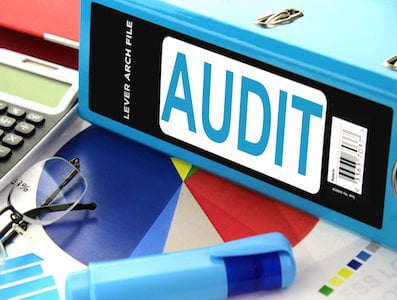
Companies get their accounts audited every year by a reputed CA. As it is conducted by the company itself, it is an internal audit. An internal audit of a private limited company includes an evaluation of the documents provided, by a private firm, and creating an audit report. The recommendations or suggestions provided by the management play a major role in these audit reports.
The financial condition and working efficiency of a company are monitored through an audit report. The audit provides a reference point to the companies using which they can make changes in their ongoing and upcoming projects.
To complete an internal audit of a private limited company, it has to go through the below mentioned process:
Also Read: What Is Bookkeeping, Types, Importance, And Bookkeeping Vs Accounting
Audit Schedule
While scheduling an internal audit, the management must confirm that every team member attends it. It is because a single piece of information can make a huge difference in the accuracy of the audit reports. Therefore, companies usually convey the auditing date well in advance and urge everyone to be present on that particular date.
Audit Planning
The internal audit must be planned carefully as the auditor needs to provide enough time to review all the important financial aspects of a company.
Results
The results of an audit report are conveyed to the management once all the auditing work has been completed. These results usually include the flaws, gaps, or inconsistencies that are affecting a company’s performance. The auditor also suggests some policies that can be employed to overcome these issues.
Along with the flaws, the outcomes of the internal audit report must also be clearly mentioned. Companies usually tend to compare their performance before and after conducting an internal audit to check whether the recommendations of the auditor have resulted in any significant changes or not.
Also Read: Types of Accounts in Accounting
Checklist For Internal Audit
A checklist for internal audit of a private company is given below:
| Sr. Number | Form Number | Form Compliance |
| 1 | Form ADT (1) | To select the auditor |
| 2 | Form ADT (2) | To evict the auditor |
| 3 | Form ADT (3) | To register the auditor |
| 4 | Form AOC (4) | To file financial statements annually |
| 5 | Form MGT (7) | To file annual returns of the firm that includes the list its debentures and shareholders |
| 6 | Form MGT (14) | To file an agreement to ROC and resolution |
| 7 | Form CAR (1) | To maintain record and cost |
| 8 | Form CAR (2) | To assign the cost auditor |
| 9 | Form CAR (3) | To submit the cost audit records to the BOD (Board of Directors) |
| 10 | Form CAR (4) | To File Cost Audit Report as required |
| 11 | Form ITR (6) | To file ITR of the firm |
| 12 | Form GSTR (9C) | To file GST audit form |
| 13 | GSTR (3B) with GSTR (1) & GSTR (2A) | For cross-examination purposes |
The following conditions must be met when it comes to an internal audit of a private limited company:
- The auditor must be appointed by the private firm within a month of its incorporation.
- Only the appointed auditor can carry out the internal audit of a company.
- The companies have to pass a resolution in the general board meeting to select an auditor.
- An auditor is initially appointed as an AGM for a minimum period of 5 years.
- The auditor needs to be appointed as one AGM before appointing any other AGMs in the company.
- The auditor must be a certified CA (Chartered Accountant) as per the regulations of the Chartered Accountant Act, 1949.
- Suppose the company is not able to appoint the auditor within the first 30 days of its incorporation. In that case, it can hold an extraordinary general meeting before the completion 3 months from its date of incorporation. This meeting should be held to appoint an auditor for the company.
- The financial statements of the private company must be signed by at least two of its directors. One of these directors must be the MD or Managing Director. In the absence of an MD, some other directors can sign the financial documents.
- The audit report is considered to be valid only if it is duly certified by the auditor. The auditor can also report frauds done by an employee, officer, or any designated authority in the management. He should do it only if he thinks that the person was rendering his duties when the crime was being committed.
The following documents are to be included in an internal audit of a private limited company:
- Balance Sheet
- Notice Form MGT-9
- Form 3CD
- Director’s Report
- Profit and loss statements and notes to which the company’s account is to be linked
- A tax audit is also present if it was conducted by the auditor
- The notes linked with the financial statements are also included at the end of the internal audit report
The following things can be seen in an internal audit report:
- Audit’s title
- Grounds on which the opinions have been formed by the auditor
- The viewpoint of the auditor
- Signature of the auditor
- The information that supports the financial reports and statements
- Date of the audit report
- The responsibilities which an auditor/auditors are responsible for related to the financial account statements
- Other responsibilities of the auditor/auditors who have participated in the internal audit of a private limited company.
- Important facts and data concerned with the internal audit
Also Read: What Are The Best Accounting Practices For Small Businesses?
Final Thoughts
As auditors are responsible for monitoring the accounts and tracking the financial activities of a firm, they play a pivotal role in its development and growth. The internal auditors who have designed an internal audit of a private company from the start can carry out the auditing works more precisely. They can choose specialized areas to audit or the entire company can be audited as well. However, internal audits usually include the areas that are regularly audited by the company.
The organization must allow the internal auditors to spend more time with the various stakeholders and employees of the company while auditing. Also, they must be allowed to work freely without any pressure from the management. Finally, their suggestions must be positively approached and incorporated into the organization.






